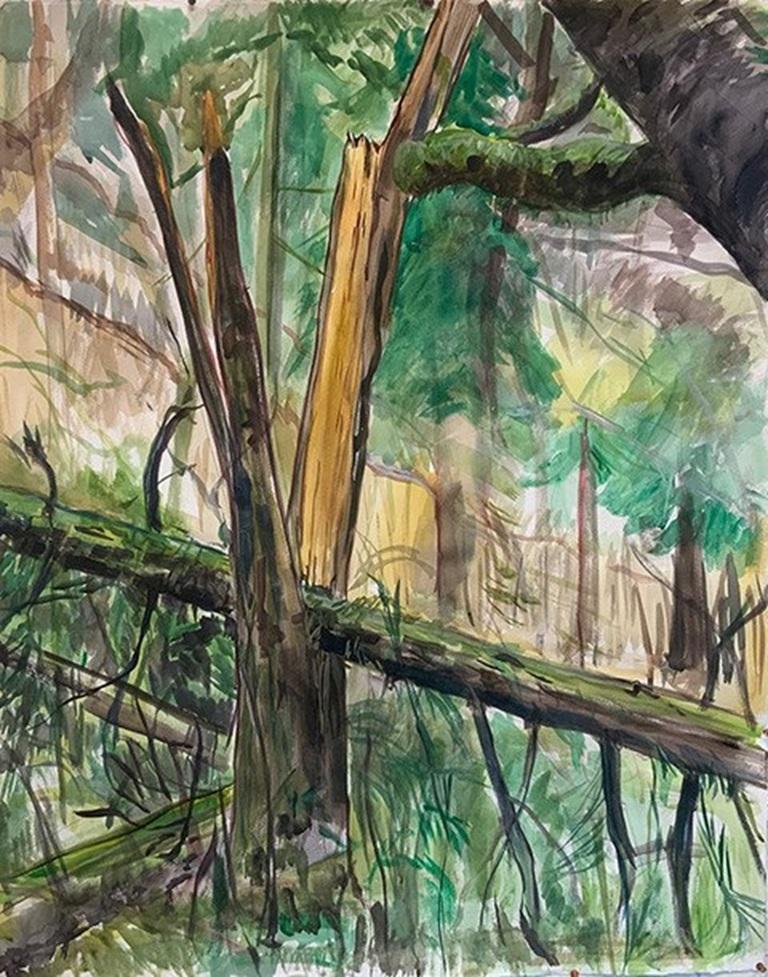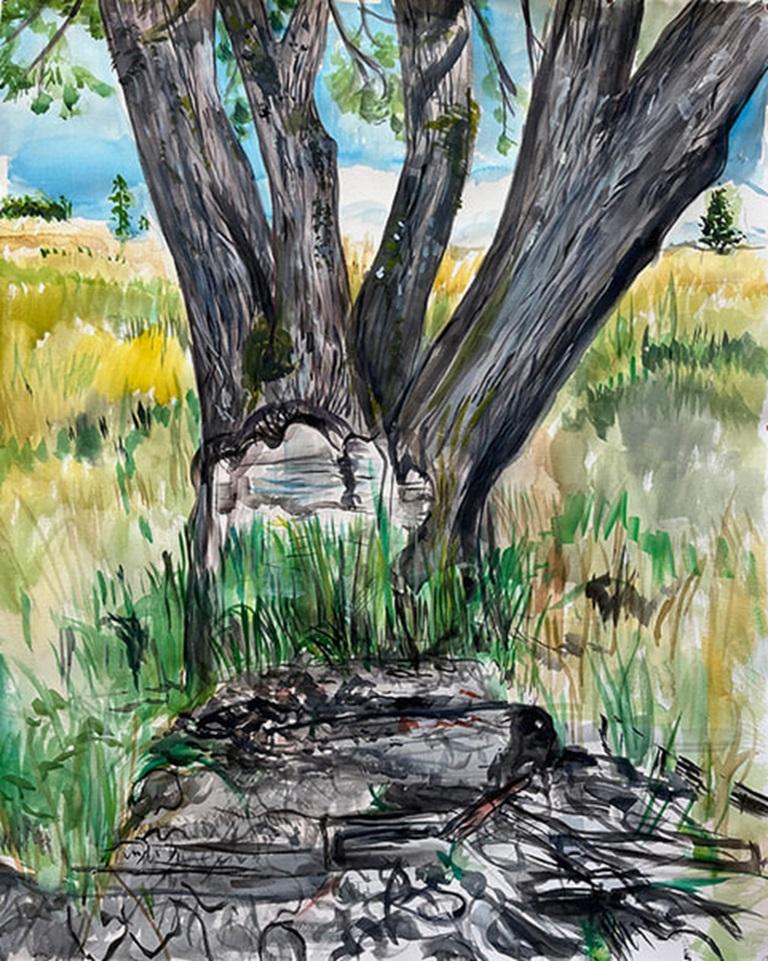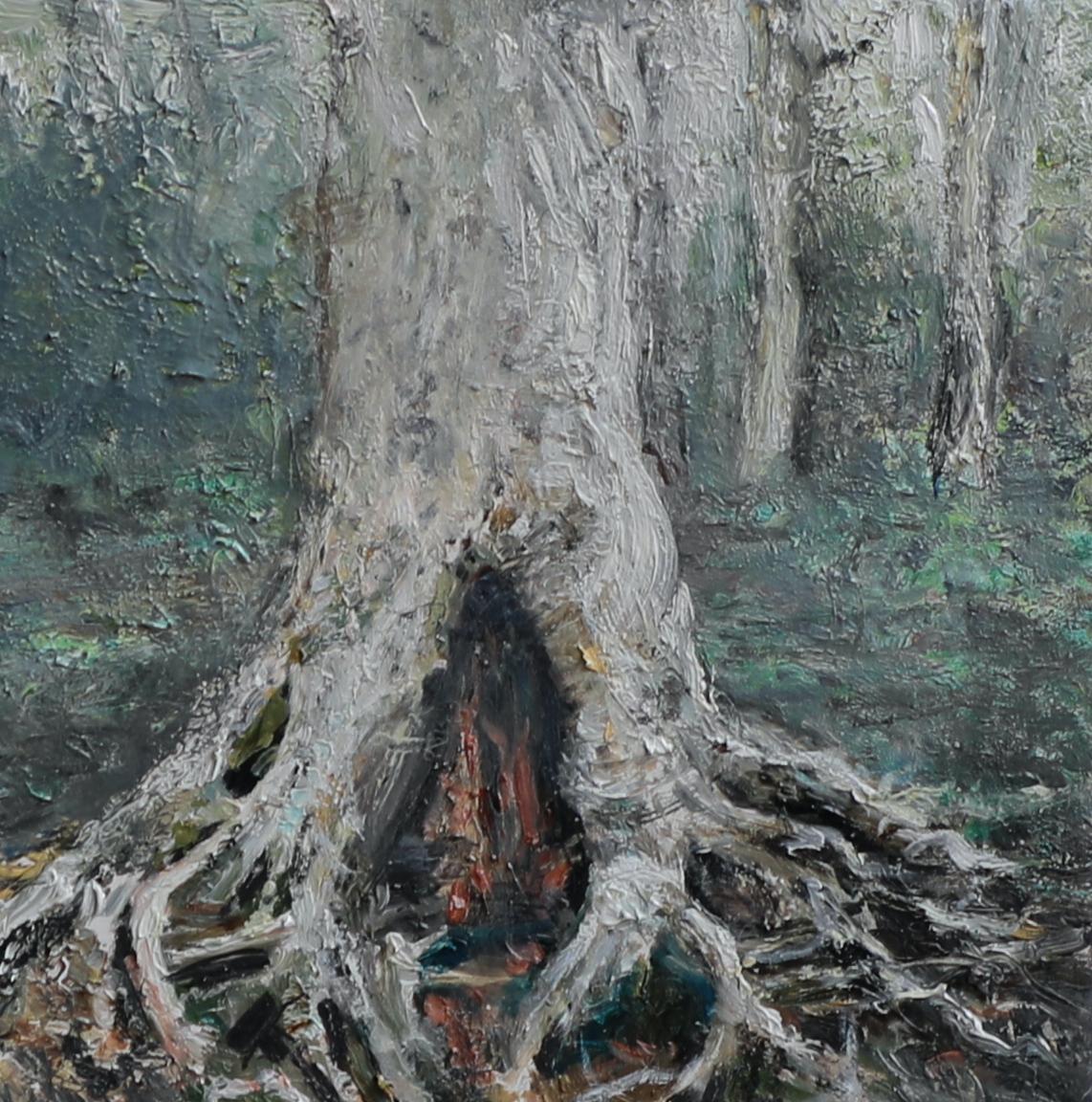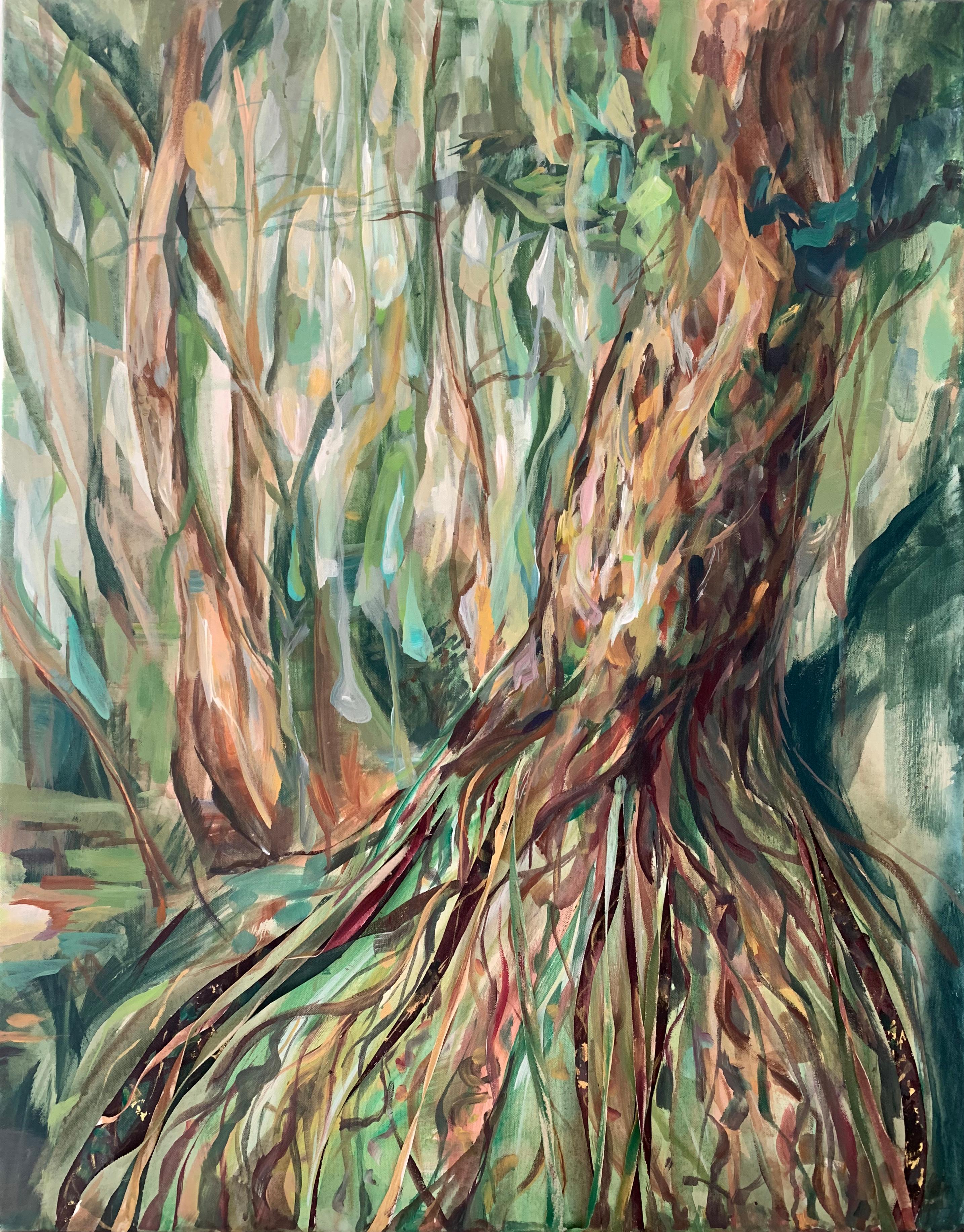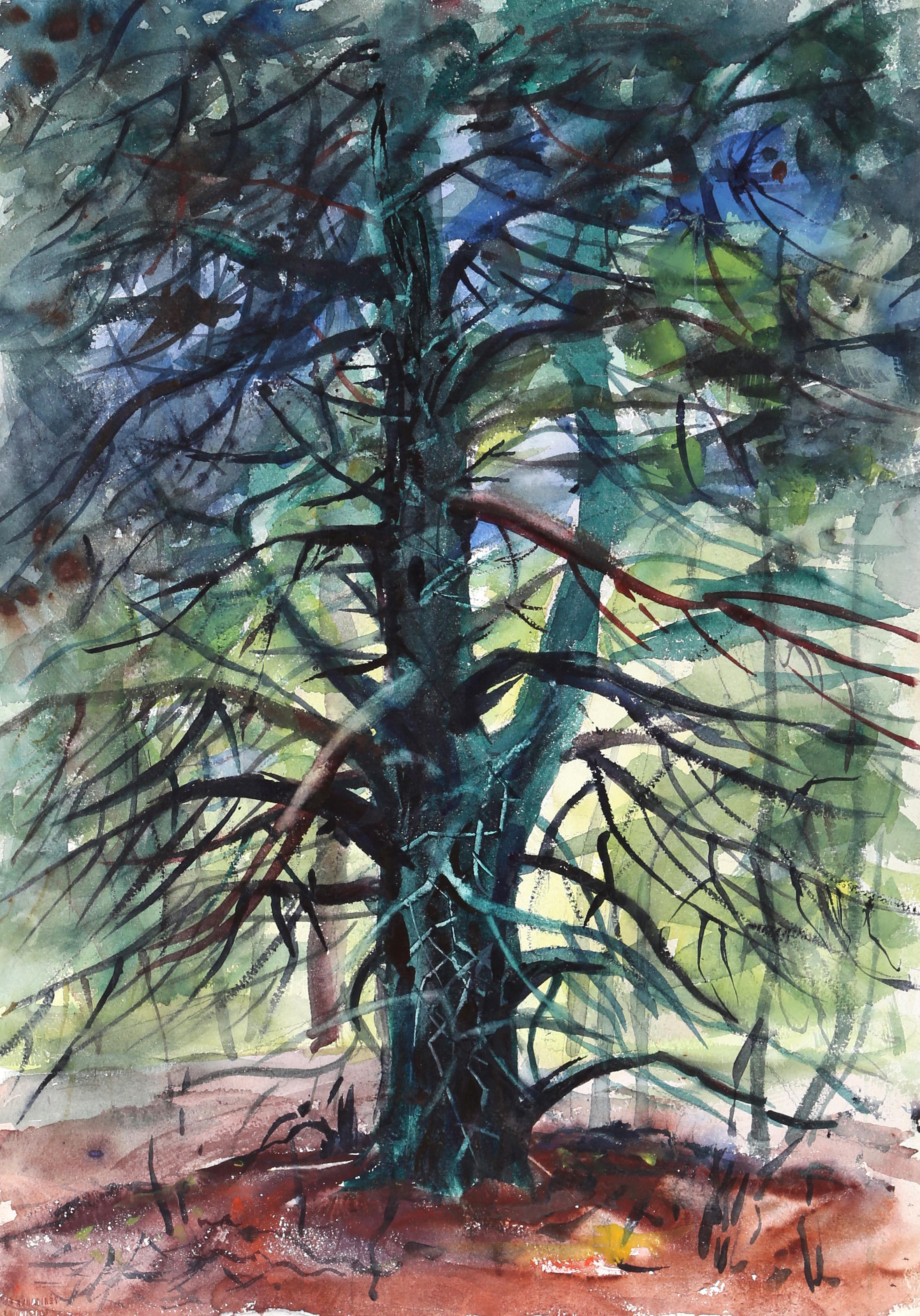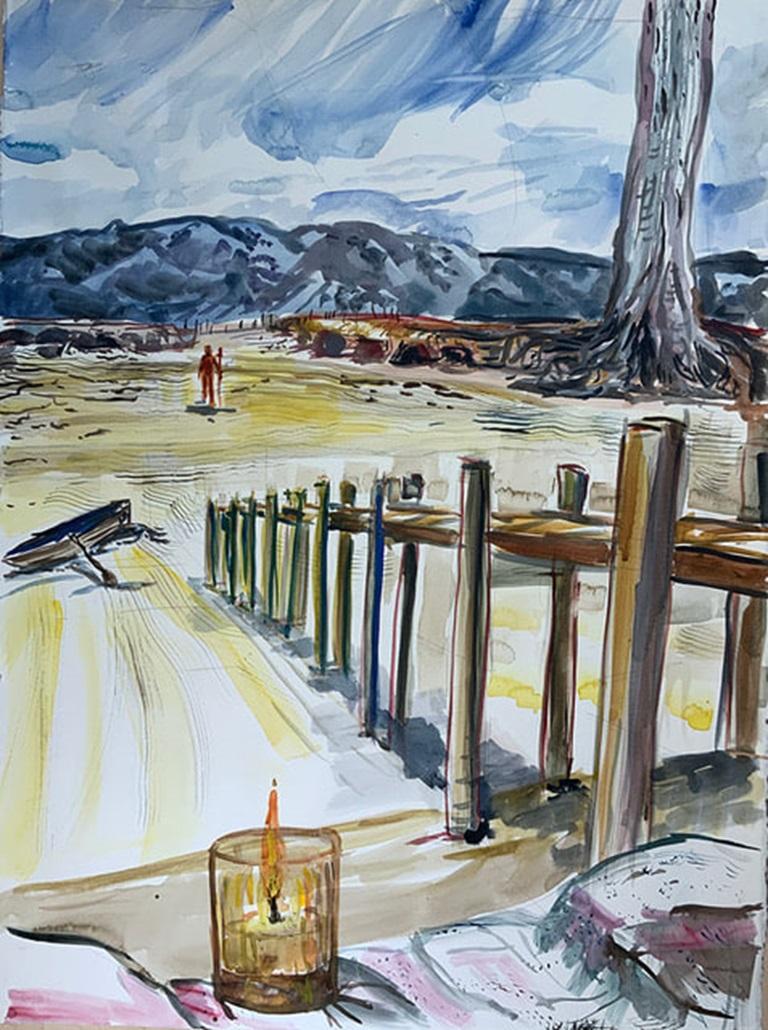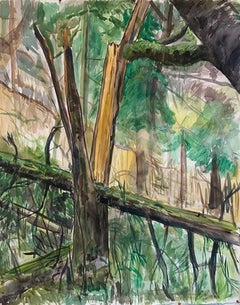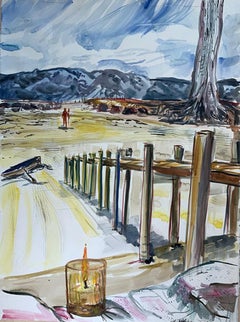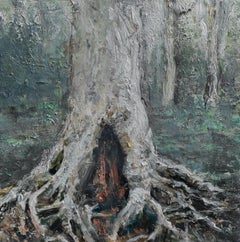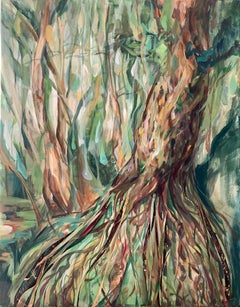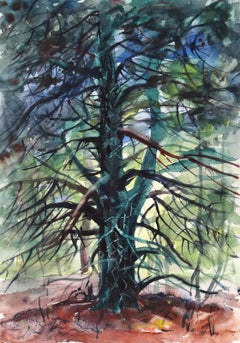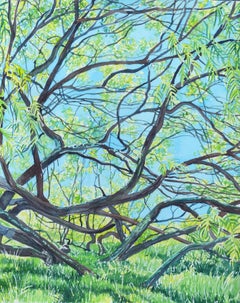Items Similar to Tangled Roots (Kelley Point Park), Watercolor Painting by Daniel Duford, 2023
Want more images or videos?
Request additional images or videos from the seller
1 of 4
UnknownTangled Roots (Kelley Point Park), Watercolor Painting by Daniel Duford, 20232023
2023
$8,000
£6,106.88
€7,020.27
CA$11,257.43
A$12,518.73
CHF 6,575.11
MX$153,054.03
NOK 81,932.14
SEK 77,239.88
DKK 52,393.89
About the Item
Tangled Roots (Kelley Point Park), Watercolor Painting by Daniel Duford, 2023
Additional information:
Medium: Watercolor on paper
Dimension: 45 × 36 in 114.3 × 91.4 cm
About artist: For 20 years, Daniel Duford has woven visual narratives — stories that flow through large paintings, graphic novels, installations and figurative sculpture. His work is born from the mythic and political history of North America. He is a 2019 Guggenheim Fellow, a 2010 Hallie Ford Fellow and a 2012 Art Matters Grant recipient. His work has been exhibited nationally including MASS MOCA, Jordan Schnitzer Museum of Art at PSU, Orange County Museum of Art and the Boise Art Museum. His writing has appeared in Artweek, ART news, High Desert Journal and Parabola among others. In 2011 he published Wellspring: Poems 1996-2006. His curatorial projects include the 2012 exhibition "Fighting Men: Leon Golub, Jack Kirby, Peter Voulkos" (2012) at the Hoffman Gallery at Lewis and Clark College, "An Earth Song, A Body Song: Figures with Landscapes", and "Works from the Permanent Collection" (2020) at Orange County Museum of Art. He is Visiting Professor of Art at Reed College. He is Creative Director of Building Five in Portland, Oregon.
- Creation Year:2023
- Dimensions:Height: 45 in (114.3 cm)Width: 36 in (91.44 cm)
- Medium:
- Period:
- Condition:
- Gallery Location:Orange, CA
- Reference Number:1stDibs: LU2793216071042
About the Seller
No Reviews Yet
Recognized Seller
These prestigious sellers are industry leaders and represent the highest echelon for item quality and design.
Established in 1984
1stDibs seller since 2024
- ShippingRetrieving quote...Shipping from: Orange, CA
- Return Policy
Authenticity Guarantee
In the unlikely event there’s an issue with an item’s authenticity, contact us within 1 year for a full refund. DetailsMoney-Back Guarantee
If your item is not as described, is damaged in transit, or does not arrive, contact us within 7 days for a full refund. Details24-Hour Cancellation
You have a 24-hour grace period in which to reconsider your purchase, with no questions asked.Vetted Professional Sellers
Our world-class sellers must adhere to strict standards for service and quality, maintaining the integrity of our listings.Price-Match Guarantee
If you find that a seller listed the same item for a lower price elsewhere, we’ll match it.Trusted Global Delivery
Our best-in-class carrier network provides specialized shipping options worldwide, including custom delivery.More From This Seller
View AllWinter Split Tree, Watercolor on Paper Painting by Daniel Duford, 2023
Located in Orange, CA
Winter Split Tree, Watercolor on Paper Painting by Daniel Duford, 2023
Category
21st Century and Contemporary Landscape Paintings
Materials
Paper, Watercolor
Cut Tree With Old Burn Pile, Watercolor Painting by Daniel Duford, 2023
Located in Orange, CA
Cut Tree With Old Burn Pile, Watercolor Painting by Daniel Duford, 2023
Additional information:
Medium: Watercolor on paper
Dimension: 45 × 36 in 114.3 × 91.4 cm
About artist: For...
Category
21st Century and Contemporary Landscape Paintings
Materials
Paper, Watercolor
Fording the River, Watercolor on Paper Painting by Daniel Duford, 2020
Located in Orange, CA
Fording the River, Watercolor on Paper Painting by Daniel Duford, 2020
Additional information:
Medium: Watercolor on paper
Dimension: 30 × 22 in 76.2 × 55.9 cm
About artist: For 2...
Category
21st Century and Contemporary Landscape Paintings
Materials
Paper, Watercolor
Fire Fallen Tree, Punch Bowl, Oil on Canvas Painting by Daniel Duford, 2024
Located in Orange, CA
Fire Fallen Tree, Punch Bowl, Oil on Canvas Painting by Daniel Duford, 2024
Additional information:
Medium: Oil on Canvas
Dimension: 40 × 60 in (101.6 × 152.4 cm)
About artist: For...
Category
21st Century and Contemporary Landscape Paintings
Materials
Canvas, Oil
How to Paint Trees (study #2), Watercolor Painting by Ken Craft, 2025
By Ken Craft
Located in Orange, CA
How to Paint Trees (study #2), 2025
Additional information:
Medium: Watercolor on paper
Dimensions: 9 × 9 in 22.9 × 22.9 cm
Signature: Hand-signed by artist, signed and dated verso...
Category
21st Century and Contemporary Figurative Drawings and Watercolors
Materials
Paper, Watercolor
How to Paint Trees (study # 4), Oil Painting by Ken Craft, 2025
By Ken Craft
Located in Orange, CA
How to Paint Trees (study #4), 2025
Additional information:
Medium: Oil on prepared cardboard
Dimensions: 9 × 14 in 22.9 × 35.6 cm
Signature: Hand-signed by artist, signed and date...
Category
21st Century and Contemporary Landscape Paintings
Materials
Oil, Cardboard
You May Also Like
"Beach Tree Roots" (2023) By Judith Peck, Original Oil Painting of Forest
By Judith Peck
Located in Denver, CO
"Beach Tree Roots" (2023) by Judith Peck is an original, handmade oil painting on cradled board that depicts a a foggy and grey forest, focused on the larg...
Category
2010s Realist Figurative Paintings
Materials
Oil, Board
Roots are our support. Original abstract nature painting
Located in Zofingen, AG
In keeping with my passion for nature, this collection "Infusing wisdom of Nature" focuses on the wisdom and support found in nature. Powerful roots symbolising spiritual and cultura...
Category
2010s Abstract Impressionist Landscape Paintings
Materials
Canvas, Oil
Tree, Impressionist Watercolor by Eve Nethercott
By Eve Nethercott
Located in Long Island City, NY
Eve Nethercott, American (1925 - 2015) - Tree (P5.61), Year: circa 1960, Medium: Watercolor on Paper, Size: 22 x 15 in. (55.88 x 38.1 cm), Description: Eve Nethercott's adept...
Category
1960s Impressionist Landscape Drawings and Watercolors
Materials
Watercolor
Ancient Mesquite Tree, Painting, Watercolor on Watercolor Paper
By Leslie White
Located in Yardley, PA
This giant mesquite tree is on the grounds of Mission San Jose in San Antonio, Texas. This painting shows just a portion of the tree which is the biggest mesquite I've ever seen. I'...
Category
2010s Realist Drawings and Watercolor Paintings
Materials
Watercolor
"We Two", Trees Inhabited by Human in Nature, Drawing with Pigments on Paper
By Frank Girard
Located in Clermont-Ferrand, Auvergne-Rhône-Alpes
This drawing by Frank Girard is created with pigments and ink, on 300g/m2 neutral white paper. It is not framed.
Through drawings, the masterful French a...
Category
2010s Realist Figurative Drawings and Watercolors
Materials
Paper, Ink, Watercolor, Pigment
"Trees, " Watercolor Painting of a Winter Scene signed by David Barnett
By David Barnett
Located in Milwaukee, WI
"Trees" is an original watercolor by David Barnett. It depicts some dark leafless trees and shrubs. The artist signed the piece lower right.
24" x 18" art
29 1/4" x 23 1/4" frame
...
Category
1960s Expressionist Landscape Drawings and Watercolors
Materials
Watercolor
